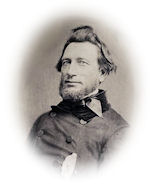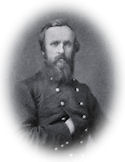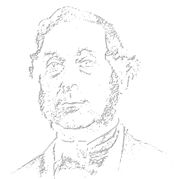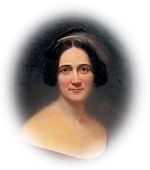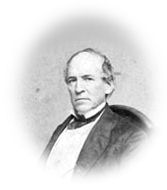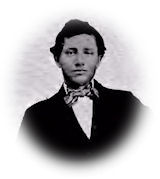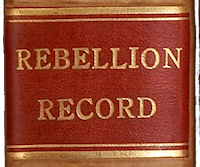
September 1.—Information, given by negroes, induced a search south of Poolesville, Md., for arms supposed to be intended for Maryland volunteers in the rebel cause. The search was successful. Some twelve or fifteen complete cavalry equipments were discovered and retained by the National scouts. Residents of the neighborhood assert, however, that the equipments belonged to a company of Home Guard cavalry, which was raised last winter to guard against a rising of the negroes; that the company was outfitted by the State, but that, owing to the distance from the place of assembling which many of the members lived, the company was disbanded before General Patterson took command of the department.
The captain and some of the other officers are in Virginia. The company was named the Poolesville Light Dragoons. Two men, supposed to be active secessionists, were captured at the same time by scouts from the Twenty-ninth Pennsylvania regiment, Colonel Murphy. Two complete cavalry equipments and the same number of magnificent horses were taken by the same party.—N. Y. Evening Post, Sept. 6.
—A skirmish took place this morning at Bennet’s Mill, Mo., between the Dent County Home Guard, stationed at that place, and a party of three hundred and fifty rebels belonging to Schnable’s regiment.—(Doc. 22.)
—This afternoon, Lieutenant Bailey, of the Fifth Cavalry, scouting in advance of his men toward Falls Church, in Virginia, discovered earthworks beyond Vanderwerken’s House. On reaching the top of a hill on which the batteries were planted, he was approached by a number of mounted rebels, who, regarding him as their prisoner already, took few precautions to secure him. Lieutenant Bailey shot the foremost with his pistol, and wheeling about, rejoined his men in a few minutes. The bullets of the enemy whistled by him harmless, as he rode away, save wounding a horse belonging to one of the privates.—Philadelphia Inquirer, September 5.
—The following is the text of a circular or proclamation of the Captain-General of Cuba relative to the rebel flag:
Havana, August 31, 1861.
To the Collectors of Ports in the Island:
First—Vessels with the flag of the Confederation of the South will be admitted into the ports of this island for the purpose of legitimate trade, provided the documents which they present do not inspire the least suspicion of piracy, fraud, or other crimes, which are punished by all national laws.
Second—Once in our ports, said vessels will be under the safeguard of the neutrality proclaimed by the Governor in the royal decree of 17th June, and cannot be molested in their loading, discharging, &c.
Third—All the authorities will consider the above vessels as proceeding from a nation having no consuls accredited in this territory.
—This day a fight occurred at Boone Court House, Virginia, between the rebels and the Federals, resulting in the total rout of the former, with a loss of thirty killed and a large number wounded, and forty prisoners taken. None were killed on the National side, but six were wounded. The National troops burned the town.[1]
—Mr. Andrews, surveyor of the port of New York, seized twenty-five vessels owned wholly or in part by rebels, including eight ships and seven barques. The value of the vessels is over two million dollars.—National Intelligencer, September 8.
—Salmon P. Chase, Secretary of the Treasury, issued an appeal to the people in behalf of the popular loan, showing that it is the interest as well as the duty of every one who has money to invest, to place it, at this crisis, in the hands of the Government. He points to the fact that the real and personal values of the loyal States amount to eleven thousand millions of dollars; that the surplus earnings of the people of these States amount to four hundred millions, whereas the cost of the war, on the calculation of high military authorities, if judiciously conducted, will not be more than two hundred and fifty millions. The interest on loans at the rate authorized by Congress—namely, seven three-tenth per cent.—will be on loans of fifty dollars, one cent per day; on one hundred dollars, two cents; on five hundred dollars, ten cents; on one thousand dollars, twenty cents; and on five thousand dollars, one dollar.—(Doc. 23.)
—To-day Major Minturn of the New York Thirty-seventh regiment, while scouting, saw a rebel officer, surrounded by a large staff, reconnoitering from Munson’s Hill. Driven by in unamiable firing of bullets from the road into a field of corn, Major Minturn retaliated by a rifle shot, aimed at the wearer of the cocked hat, who instantly fell out of his saddle. He was immediately picked up and carried into a school-house. Fifteen minutes afterward some of the party struck the secession flag, as a token of grief.—Boston Transcript, September 4.
[1] Boone Court House is a small village, and is the capital of Boone County, Virginia. It is situated on the Little Coal River, two hundred and forty-five miles, in a direct line, west from Richmond. The surrounding country is very sparsely settled. The county of Boone is a new one, or at least formed within a few years past, and is in the southwest part of Virginia. It is bounded on the northeast by Coal River, an affluent of the Kanawha, and also drained by Little Coal River and Laurel Creek. It was formed out of Logan and Kanawha counties, and named in honor of Daniel Boone, the renowned pioneer of the West.
